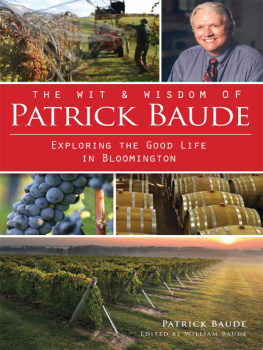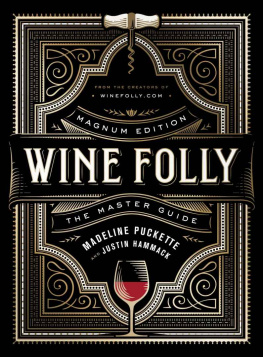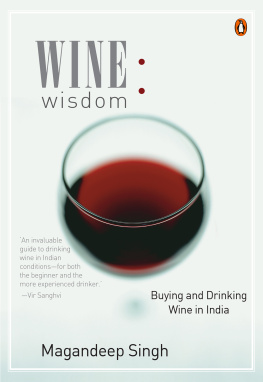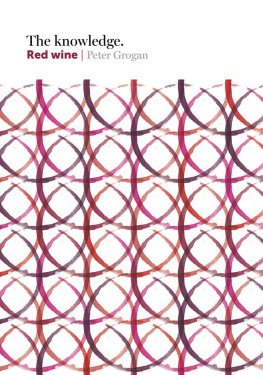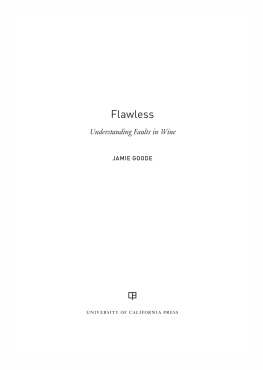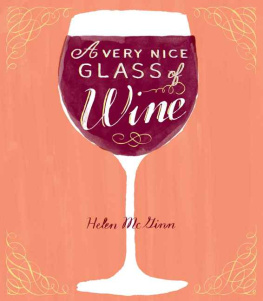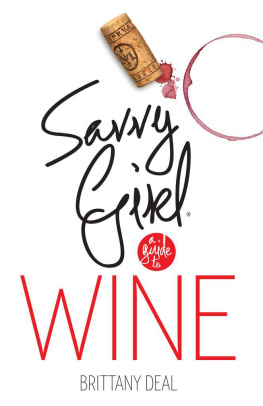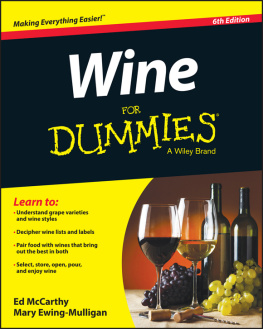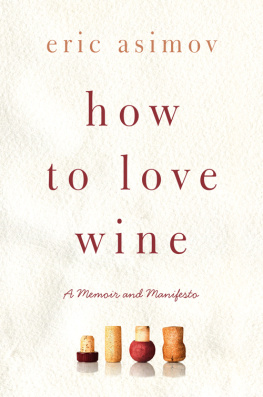

Published by American Palate
A Division of The History Press
Charleston, SC 29403
www.historypress.net
Copyright 2012 by William Baude
All rights reserved
Front cover image of Pat Baude courtesy of Indiana University. Taken by Annalese Pcorman, 1995.
Special thanks to Bill Oliver, Kathleen Oliver, Todd Humerickhouse and Oliver Winery.
All photography by Chris Howard unless otherwise noted.
First published 2012
e-book edition 2012
Manufactured in the United States
ISBN 978.1.61423.766.2
Library of Congress CIP data applied for.
print ISBN 978.1.60949.816.0
Notice: The information in this book is true and complete to the best of our knowledge. It is offered without guarantee on the part of the author or The History Press. The author and The History Press disclaim all liability in connection with the use of this book.
All rights reserved. No part of this book may be reproduced or transmitted in any form whatsoever without prior written permission from the publisher except in the case of brief quotations embodied in critical articles and reviews.
CONTENTS
FOREWORD
For nearly five years, Patrick wrote about wine for Bloom Magazine. There are quite a few wine columns in quite a few publications, but Patricks column was different, because he wasnt just writing about wine, he was writing about life. He did so with insight and humor and with a common touch that made what he wrote engaging for everyone in the communitypeople knowledgeable about wine, people seeking wine knowledge and people with no interest in the subject at all. Like me. Yet we could all learn something from this fine, uncommon man.
My first encounter with Patricks writing came when Christine Barbour, political scientist and food columnist, directed me to his wine blog. It was spring 2006, and I was preparing to launch Bloom Magazine here in Bloomington, Indiana. I remember reading one of his blog postsand then another and another and another. His postsessays about wine and occasionally beerwere smart, witty, warm, whimsical and full of information. They didnt talk up, and they didnt talk down. There was no pretense (a particular plague among wine columnists); they were pure Patrick.
I knew right away that I wanted him to write a wine column for the magazine. (Who could resist lines like If Gwyneth Paltrow wants to meet me near the Spanish Steps for a glass of Brunello, I think I can clear my calendar.) But as a newcomer to Bloomington, I didnt know the extent of his following. My fear was that the whole town was reading this incredible blog and that a magazine column would be redundant. I called Patrick, introduced myself and was quickly relieved of that fear. Only my family reads it, he assured me.
And thus began a beautiful flow of columns that ended far too soon with Patricks passing.
Some time later, a memorial service for Patrick was planned, and I was asked to be a speaker. I was honored but apprehensive. What would I say? I had known Patrick for only five years; other speakers and most of the audience would have known him for decades.
The day of the service, the large lecture hall at the IU Maurer School of Law was packed with Patricks family, friends, colleagues and former students. Tissue boxes were strategically located at the end of each aisle. Instead of a speech, I read vignettes from my favorite Patrick columns. It was Patricks voice and Patricks words; I was merely a conduit. The audience responded with waves of laughter as though Patrick was there in the room, entrancing us once again with his stories.
I hope that as you read this book, you, too, will feel his presence. And if you have the urge to laugh out loud, please do. I think Patrick would like that.
Malcolm Abrams
Editor and publisher
Bloom Magazine
INTRODUCTION
Dad spent forty years as a constitutional law professor at Indiana University, a job he clearly loved and excelled at. Thats evidenced by the numerous teaching awards he won, by the glowing tributes from colleagues and former students recently published in the Indiana Law Journal and by the many years he spent playing with and building up ideas.
But law was not Dads only professional passion. Dad spent close to five years as a professional wine writer for Bloom Magazine, especially the years right after he had retired (but was still teaching). When I described my dad to new friends during that time period, I was no longer sure whether to identify him first and foremost as a constitutional law professor or a wine writer. I almost suspected that sharing what he knew about wine had become as important to him as teaching law.
One reason for that, as you will see from his writings in this book, is that wine was not just a narrow topic for Dad. It was a frame of reference for food, for history, for cuisineand frequently for life generally. So writing about wine was a way to write about travel, about eating, about family and about much more. (As he puts it in this book: It must be that wine critics are not writing about wine as suchThey are arguing about the good life to which wine might be a tool.)

The floor of Pat Baudes wine cellar, which held wine bottles that no longer fit on the packed shelves.

William Baude savoring a glass of wine in his dads honor.
Writing about wine (and beer and spirits) was also a way to connect with places. Very little wine is grown in Indiana (though some is). But Dads father was French, and it is hard to read his thoughts about French wine without sensing a familial connection. (Dad also frequently wrote about wine in California and visited wineries therethe state where I now live.)
Moreover, a major point of Dads writings was to emphasize the local experience in finding and drinking great wines. For many years it was very hard to get expensive boutique wines in Indiana, where direct shipments were legally problematic and local tastes did not often support exotic preferences. But wine, for Dad, was supposed to be an unpretentious everyday pleasure, so he was eager to demonstrate that you could live well (and drink well) without living in California or New York or Paris.
There is more of a local element to beer. There are multiple good, local breweries in Bloomington (discussed in Heres to Beer!), and many more scattered throughout the Midwest. Perhaps the most place-inspired of all is bourbon whiskey, most of which is made just across the southern Indiana border in Kentucky. Bourbon does not feature as extensively in these writings, but Dad also grew quite fascinated with it.
The chance to write about locally available wines (and local beer and spirits)as well as the rise of Bloom Magazine itselfis also connected to the growth in Bloomingtons food scene. There are several Bloomington establishments that are mentioned again and again in these pages (like the inimitable Restaurant Tallent), which made Bloomington an excellent place to be a foodie. Its hard to imagine most of them existing in 1968, when Dad first arrived.
Finally, a few words on the contents of this book. Most of the wine writing in the book comes from my fathers columns, published in
Next page
